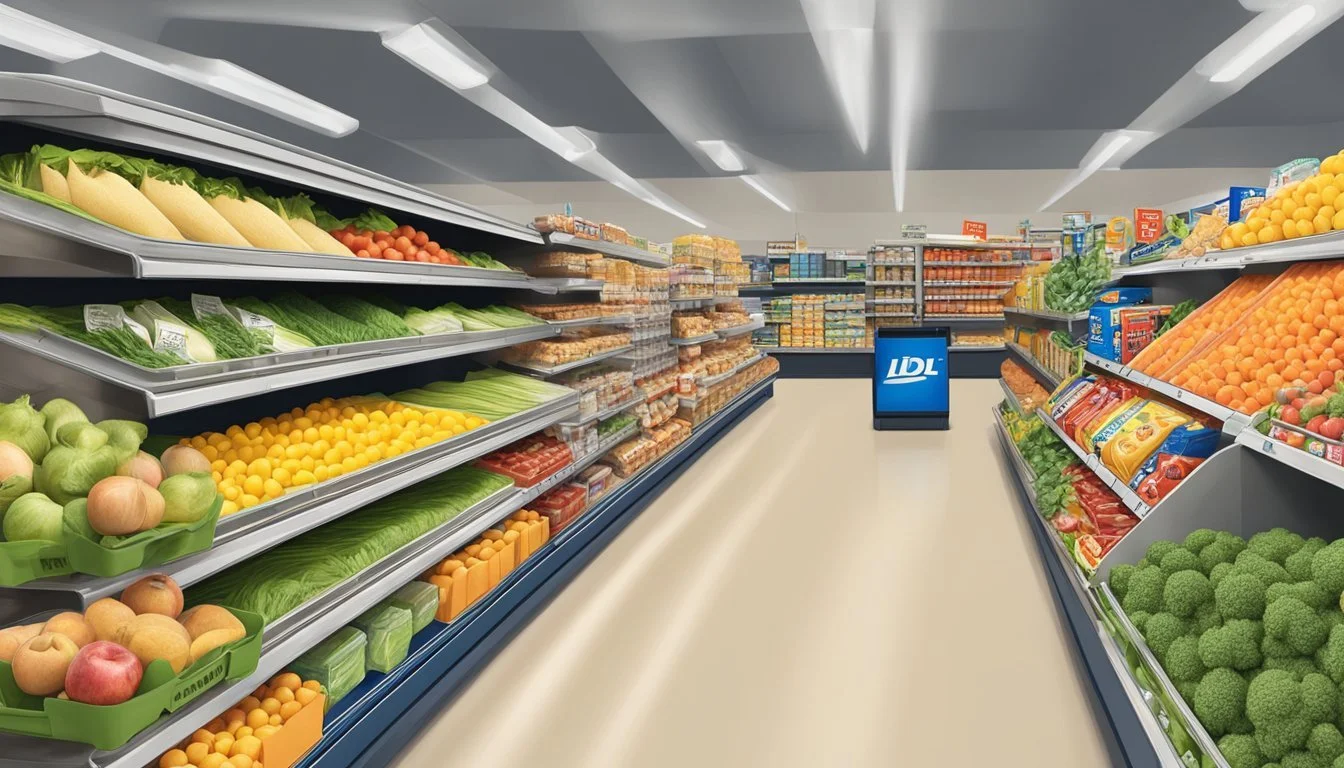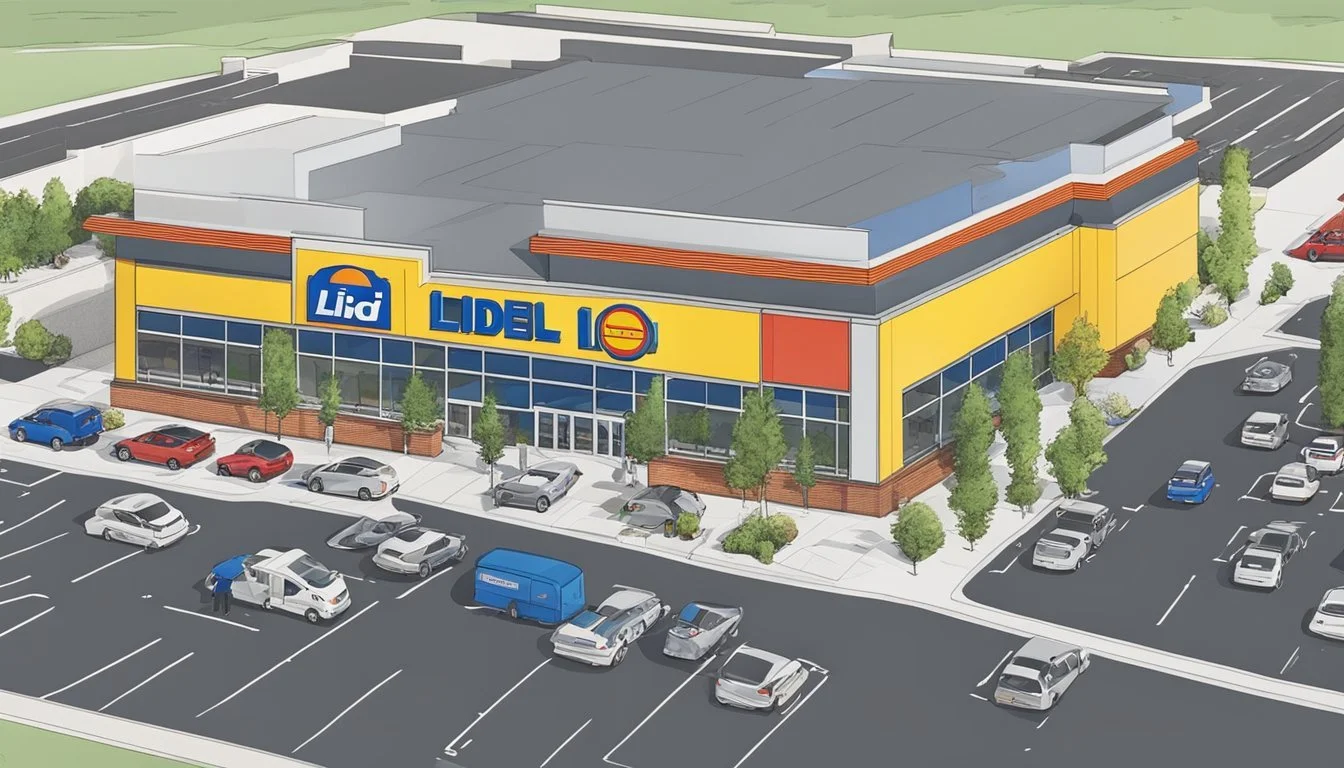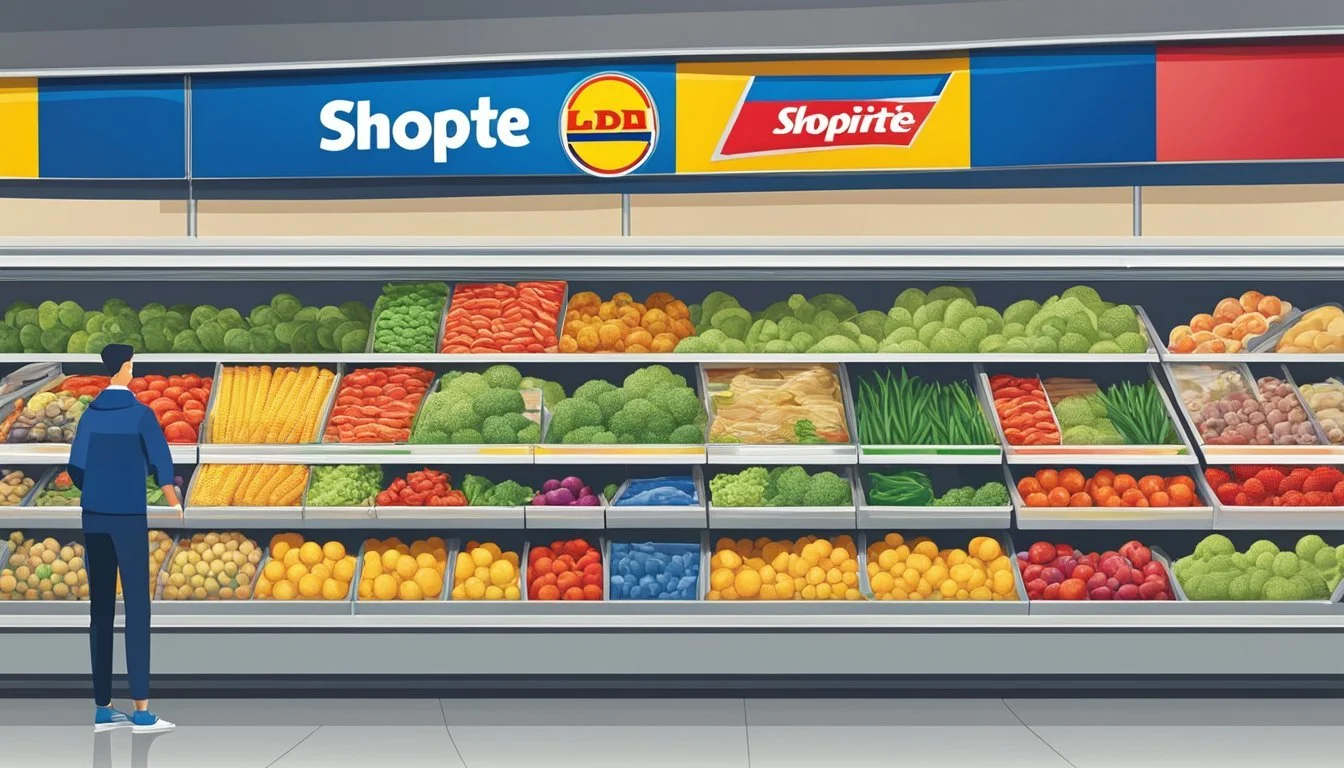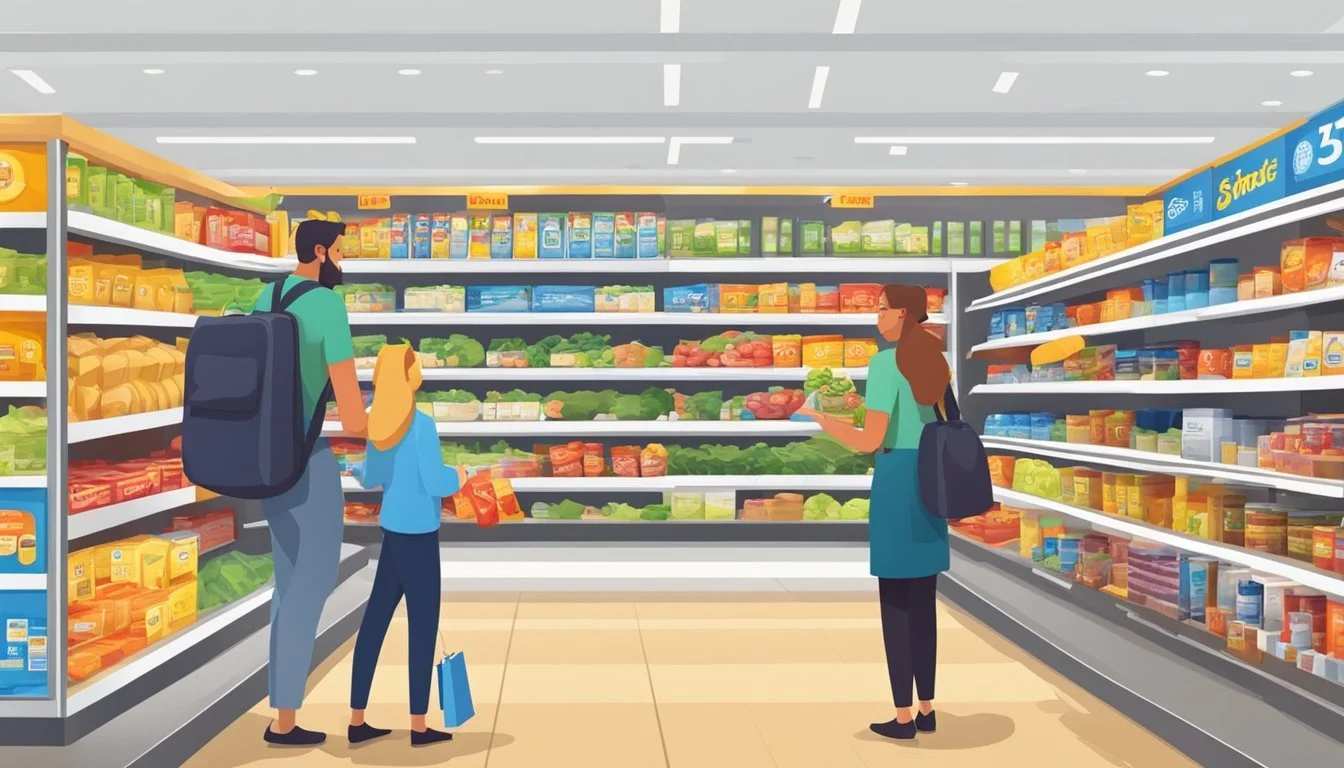Is Lidl Cheaper Than ShopRite?
Comparing Grocery Prices and Value
Part of Our Grocery Store Guide with Details on Lidl Prices and ShopRite Prices
When comparing grocery prices between Lidl and ShopRite, consumers may find that overall ShopRite typically provides lower costs. Analysis of various items shows that out of a selected 40 items comparison, ShopRite's total price generally emerges as more economical. Lidl, a store known for its aggressive pricing strategy, offers lower prices on its own brand products compared to national brands, aiming to deliver quality at more affordable rates.
On the other hand, ShopRite's extensive product range, which includes specialty and organic options, matches its competitive pricing on store brand items. While Lidl might offer better deals on some specific products, ShopRite's pricing advantage stretches across different sections of the store. The choice between the two may also be influenced by factors such as location, product range, and shopping preferences.
Each grocery chain has its own strategy to attract customers—Lidl's lower-priced own brand items against ShopRite's overall lower prices on a wider variety of goods. Consumers benefit from the competition between these stores as they strive to offer better deals, selection, and quality, ultimately influencing where shoppers might get the best value for their grocery budget.
Overview of Lidl and ShopRite
When it comes to grocery shopping on the East Coast, two prominent names stand out: Lidl and ShopRite. Both supermarket chains are recognized for their broad market presence, with ShopRite having a longstanding history in the Northeastern United States, while Lidl, a relatively newer player, has been expanding its operations.
History and Expansion
Lidl, founded in 1973 in Germany, has established itself as a major international supermarket chain. It launched its first stores in the United States in 2017, quickly expanding its footprint with over 100 stores, focusing on offering competitive prices and a curated selection of private label products. Lidl's growth strategy includes the acquisition of store locations and swift construction of new stores, allowing for rapid expansion, particularly along the East Coast.
ShopRite, on the other hand, started in 1946 in New Jersey and has grown to become a staple in the Northeastern grocery market. With 321 stores, ShopRite operates primarily in New Jersey, New York, Connecticut, Delaware, Pennsylvania, and Maryland. As a member of the Wakefern Food Corporation, the largest supermarket cooperative in the United States, ShopRite benefits from collective buying power and a strong regional brand presence.
Market Presence
Both Lidl and ShopRite have carved out their own segments in the grocery industry. ShopRite's significant presence in northeastern states like New York and Pennsylvania has established it as a go-to supermarket for a wide selection of groceries, including a strong emphasis on local products and community ties.
Comparatively, Lidl has been steadily increasing its market presence since its U.S. inception, focusing on competitive pricing as a key market differentiator. Its strategy of offering high-quality products at lower prices has resonated well with consumers, particularly in areas where cost savings are prioritized.
While ShopRite has a long history and strong roots in the region, Lidl's aggressive expansion suggests a commitment to growing its presence and competing in the East Coast grocery market.
Price Comparison Methodology
When assessing which store offers lower prices for groceries, one must take into account various specific factors and employ precise analysis techniques. This ensures an unbiased and accurate comparison between Lidl and ShopRite.
Factors Influencing Prices
Location: Geographic location can significantly affect the pricing structure of retail stores.
Seasonality: Prices may fluctuate based on the season, especially for produce items.
Sales Volume: Stores with higher sales volume may offer lower prices due to economies of scale.
Organic vs. Conventional: Prices for organic produce are typically higher than non-organic counterparts and are a key factor in cost analysis.
Brand Type: Comparison of name-brand products versus store-brand items will influence the price evaluation.
Analysis Techniques
Sampling: A selection of identical or similar items from both stores is chosen for comparison.
Standardization: Ensuring quantities are comparable, taking into account unit prices, weight, or volume.
Record Keeping: Documenting the compared item prices from both Lidl and ShopRite consistently over time.
Data Sources: Utilizing reliable data from recent receipts, advertised deals, and consistent store visits.
Price Tracking: Monitoring changes in prices to identify patterns and deduce averages for accurate comparison.
By incorporating these methodologies, the comparison aims to reflect the true cost consumers will face when deciding between shopping at Lidl or ShopRite.
Product Selection
When comparing Lidl and ShopRite, it's important to consider not just the cost, but the range and quality of products each store offers. Each supermarket chain has its own approach to product selection, ranging from exclusive brands to organic and conventional options.
Quality of Products
Lidl is known for its high-quality private-label brands—often seen as comparable to national brands. The supermarket offers a range of both generic and national brands. Their focus frequently leans towards European suppliers, especially in the categories of dairy and meat products. Consumers can expect reliable quality, with Lidl having a strong emphasis on fresh produce and baked goods.
ShopRite, on the other hand, has a reputation for variety and includes a wide assortment of national and regional brands. It carries a substantial organic section alongside conventional options. The store's meat and dairy products are diverse, with quality being a critical focus to remain competitive.
Variety of Brands
Lidl's brand assortment largely revolves around its own private labels but also includes a curated selection of national brands. The majority of the store's inventory comprises Lidl-exclusive brands that cover a broad spectrum of groceries, including organic and specialty items.
ShopRite boasts a wider array of brands, making it a go-to for shoppers who prefer more choices. The supermarket provides a mix of popular national brands, as well as their high-quality store brand, 'Bowl & Basket', which competes with Lidl's private labels in terms of price and quality. Additionally, ShopRite offers specialty products, including a robust range of organic and gluten-free items.
Pricing of Staple Items
When comparing pricing for staple items between Lidl and ShopRite, consumers will find variations depending on the product. Lidl is known for its competitive pricing, particularly on household staples.
For example, a gallon of milk at Lidl is priced at $2.99, whereas the same quantity at ShopRite costs $3.49. In terms of bread, Lidl offers it at $1.19, while ShopRite's price is slightly higher at $1.59.
Item Lidl Price ShopRite Price Milk $2.99 $3.49 Bread $1.19 $1.59
Pricing on items like eggs, sugar, and butter typically follow similar patterns, with Lidl maintaining a lower price point. However, ShopRite sometimes offers deals and discounts that may reduce the cost.
Fruits and vegetables at ShopRite can be more affordable, as seen with a comparison where ShopRite's total for a produce selection was $16.66, less than Lidl's $21.41. This is due to ShopRite's produce often being sold individually, giving consumers the flexibility to purchase smaller quantities and potentially saving money.
Lidl's assortment of cheeses and seasonings often features its private-label brands, which contributes to lower prices. On the other hand, pasta and rice are staple dry goods that remain competitively priced at both stores.
In conclusion, Lidl often provides more affordable options for staple items, but ShopRite can be a cost-effective choice, especially when taking advantage of their individual produce pricing and periodic sales.
Special Offers and Discounts
When comparing Lidl and ShopRite, each store has its own unique approach to providing value through special offers and discounts. These savings heavily center around weekly deals, loyalty programs, and targeted coupon promotions.
Weekly Deals
Both Lidl and ShopRite offer weekly deals that significantly reduce the prices of various items across their product ranges. Lidl's weekly deals often include discounts on both food and non-food items, enticing customers with limited-time value. In contrast, ShopRite's weekly deals may not match Lidl's in terms of the breadth of items offered but can provide substantial savings in specific categories such as fresh produce.
Lidl: Weekly specials provide discounts on select items ranging from meats to bakery goods.
ShopRite: Focuses on savings within the produce section and other rotating categories.
Loyalty Programs
Loyalty programs play a pivotal role in rewarding customers for their repeated patronage. ShopRite’s Price Plus Club gives members access to exclusive deals and discounts, often tailored to the shopping patterns of the cardholder, adding considerable value to regular shopping experiences. While Lidl doesn't have a traditional loyalty program, its business model incorporates low prices that can sometimes undercut even the member prices at other stores.
ShopRite: Offers the Price Plus Club with member-specific discounts.
Lidl: Lacks a traditional loyalty program but maintains competitive pricing.
Coupons and Promotions
Coupons and promotions are another avenue through which Lidl and ShopRite deliver savings. ShopRite advantages include a broader availability of coupon codes and in-store pickup options, reflecting its established presence in the market. Meanwhile, Lidl's strategic promotions are designed to complement its low-cost positioning in the retail space.
ShopRite: Customers may use multiple coupons and often benefit from in-store promotions.
Lidl: Promotional events are planned to align with their affordability-centric branding.
Store-Brand vs National-Brand Comparisons
When shopping for groceries, consumers often have to choose between store-brand products and national brands. Store-brand items—also known as private-label—are typically offered by the supermarket itself, while national brands are produced by large manufacturers and sold across various retail outlets.
Lidl boasts an extensive range of store-brand products that are priced competitively. They focus on quality while maintaining lower prices. For instance, consumers might find Lidl's milk priced at $2.99, which can be lower than the national brands available.
ShopRite, on the other hand, also offers a competitive pricing structure for their store brands. Although slightly higher-priced than Lidl's store brands in some cases, such as bread priced at $1.59, ShopRite aims to provide cost-effective alternatives to national brands, catering to budget-conscious customers.
Here, a price comparison table illustrates the cost differences between store brands and national brands at Lidl and ShopRite:
Item Lidl Store-Brand Price ShopRite Store-Brand Price National Brand Average Price Milk $2.99 $3.49 $3.69 Bread $1.19 $1.59 $2.29
Other retailers like Aldi, Walmart, Whole Foods, and Target also have their own store-brand lines, with Aldi and Walmart, in particular, being recognized for their cost savings. For example, Walmart is often highlighted for prices that are considerably lower than the average, with potential annual savings for families on their grocery bills.
Amazon has entered the grocery market with its acquisition of Whole Foods and through its own online platform, providing 10% off select ShopRite items as a promotion, emphasizing value on both store-brand and national-brand products.
Comparing store brands across these retailers can reveal a pattern where store brands generally present consumers with a lower-cost option without sacrificing significant quality, positioning them as a viable alternative to more expensive national brands.
Consumer Shopping Experience
The consumer shopping experience at Lidl and ShopRite includes a variety of in-store services and checkout efficiency aspects that influence their grocery shopping routine.
In-Store Services
Lidl offers a limited selection of in-store services to maintain its low-cost structure. It typically does not provide amenities such as in-store banking, pharmacies, or extensive deli sections, which can be commonly found in ShopRite stores. ShopRite, on the other hand, provides customers with a broad range of services including a pharmacy, a bakery, and a deli, enhancing the convenience of a single-stop-shopping experience. Additionally, ShopRite may offer personalized customer service, which can include cake ordering and catering services for events.
Checkout Efficiency
When it comes to checkout efficiency, Lidl has a streamlined process designed to minimize overhead costs. The stores usually have a simple layout with single queue lines that lead to multiple registers, speeding up the checkout process. ShopRite has self-checkout lanes in addition to traditional checkout lanes, which provide customers options based on their preference. The availability of more cashiers during peak hours is a strategy implemented by ShopRite to reduce wait times, ensuring that customers can quickly maneuver through the shopping cart congestion. Both stores implement electronic and contactless payment methods to keep the transaction times fast and secure for consumers.
Location and Accessibility
When considering the availability of Lidl and ShopRite stores, geographic location is a primary factor. Lidl, a grocery chain with German roots, has expanded internationally but maintains a stronger presence in European markets. In the United States, Lidl stores are more concentrated in the Eastern states. They focus on accessible locations typically characterized by their stand-alone buildings or presence in shopping plazas with ample parking.
ShopRite, meanwhile, operates predominantly as a cooperative of individually owned stores, meaning that their number and accessibility can vary widely by region. Most ShopRite locations are found in the Northeastern United States, and they often feature larger supermarket formats. Their presence in the community is marked by easy access for local shoppers, usually within suburban shopping centers or near residential areas.
Both retailers emphasize local grocery accessibility, tailoring their location strategies to align with convenience for their customer base. However, the density of stores between the two may differ, with ShopRite having a more significant presence in certain regions where Lidl is still growing its footprint.
Accessibility is also driven by store layouts and parking facilities, with both Lidl and ShopRite offering organized shopping environments and adequate parking. This ensures shoppers can easily visit and carry out their grocery shopping without undue inconvenience.
In summary, the location and accessibility of Lidl and ShopRite stores depend on regional dominance and the targeted convenience for shoppers within their respective markets. While both aim to be easily accessible, the number of stores varies, with ShopRite having a broader reach within its established regions.
Sustainability and Ethical Practices
When comparing Lidl and ShopRite, it's important to consider their commitment to sustainability and ethical practices, especially in their approach to offering organic produce. Lidl has demonstrated its dedication to corporate social responsibility (CSR) through its first CSR report, indicative of a strategy encompassing environmental sustainability and ethical sourcing.
Lidl places a strong emphasis on sustainability within its stores, extending to the provision of organic produce options for consumers. They ensure that a considerable selection of their produce meets organic standards, which supports sustainable farming practices and reduces the environmental impact of pesticides.
ShopRite also boasts a range of organic products, catering to an environmentally-conscious customer base. Both retailers recognize the growing consumer demand for sustainably-sourced and organic groceries, aligning with broader market trends towards ethical consumption.
Retailer Sustainable Practices Organic produce Lidl CSR initiatives, resource efficiency Extensive organic range ShopRite Regional sustainability efforts Variety of organic selections
The retailers' commitment to ethical practices extends beyond food sourcing. They prioritize reducing their carbon footprint, implementing energy-saving technologies, and engaging in responsible waste management. Customers patronizing these stores can find transparency in these efforts, aligning their purchasing decisions with their values.
Ultimately, both Lidl and ShopRite are active in integrating eco-friendly practices and offering organic products, with subtle differences that reflect their unique brand philosophies and target markets.
Analysis of Customer Reviews
Customer reviews provide insight into user satisfaction and the common themes in feedback for Lidl and ShopRite.
Overall Satisfaction
Customers of both Lidl and ShopRite have expressed varying levels of satisfaction. Ratings from an online comparison platform show ShopRite with a score of 4.2 and Lidl slightly behind with a score of 4.1, indicating a narrow preference for ShopRite. These scores suggest that customers generally find both stores satisfactory, with ShopRite taking the lead.
Comparison of Complaints and Praises
ShopRite:
Praises typically focus on the variety of products and the convenience of location.
Complaints often regard occasional higher prices compared to competitors.
Lidl:
Customers frequently compliment the lower prices and the quality of own-brand items.
Criticisms point out that most produce is prebagged, which limits purchase quantity flexibility.
The reviews reveal that ShopRite is favored for its range of products, while Lidl is often chosen for its competitive pricing.









